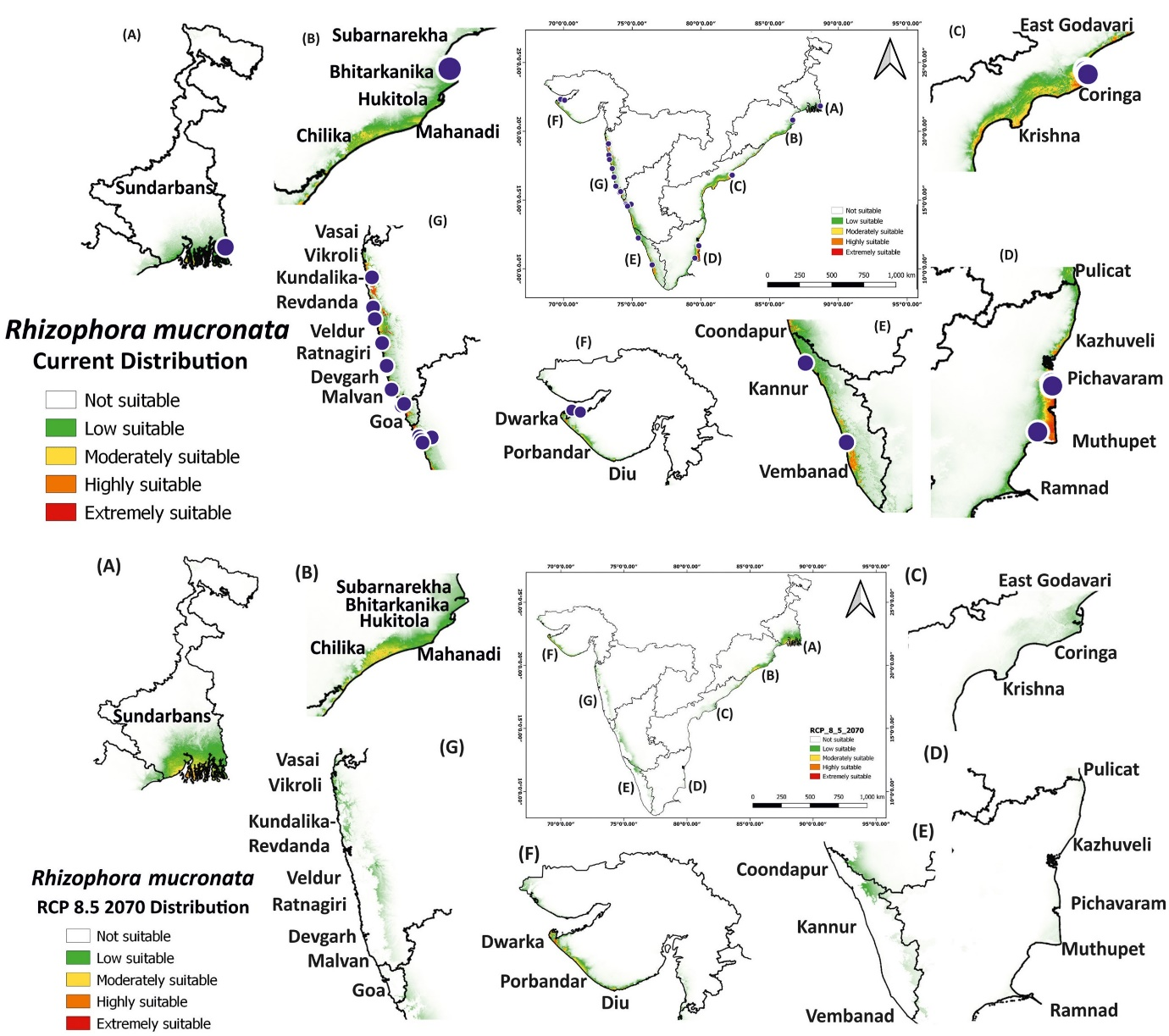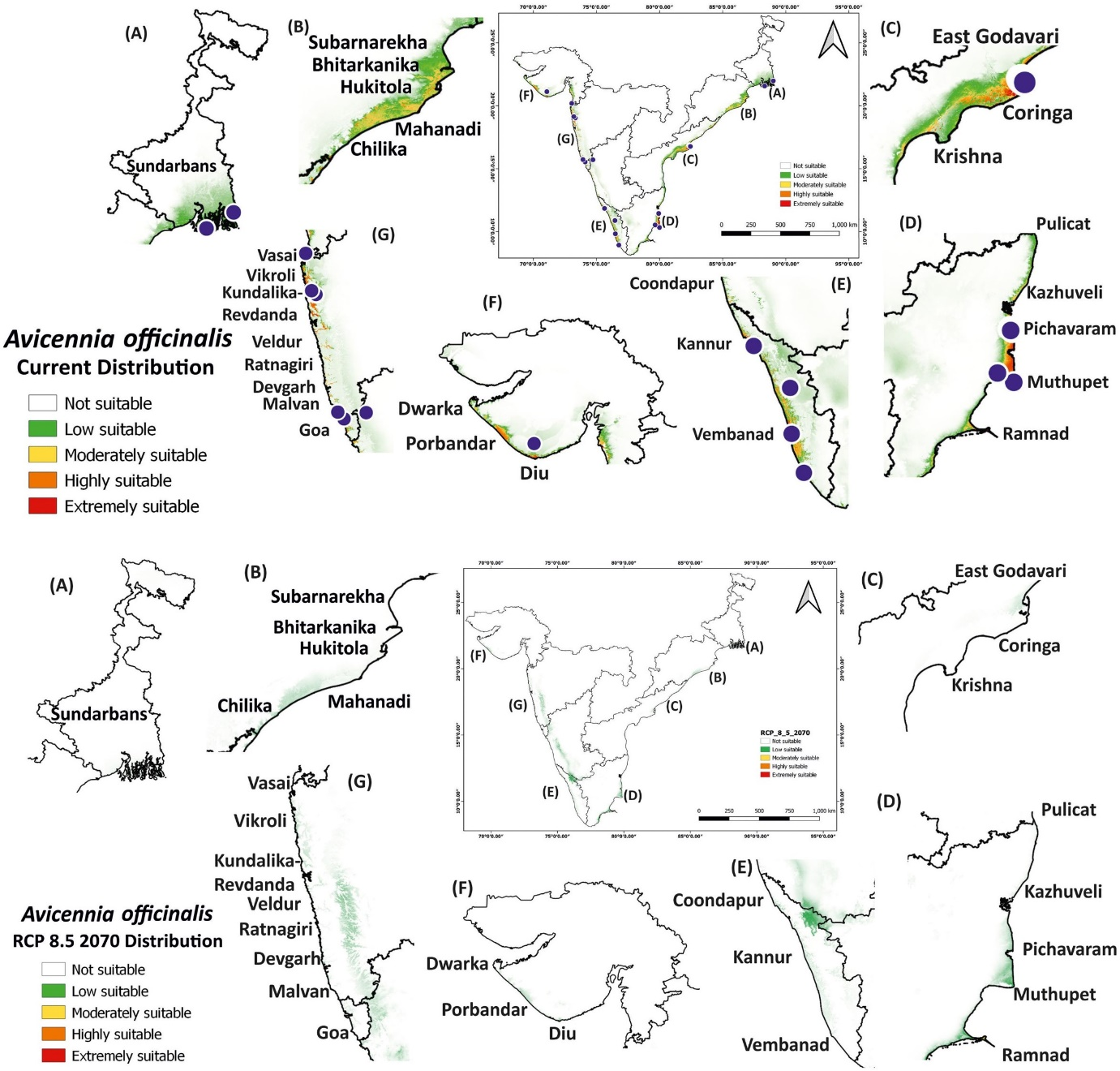Certain mangrove species in Chilika and Sundarbans along the east coast and Dwarka and Porbandar along the west coast of India is likely to reduce and shift landward by 2070 due to decline in suitable habitats in response to precipitation and sea level changes, said a study based on a prediction model. The study can help identify highly suitable areas for conservation and management and develop conservation strategies for the future.
Mangroves support numerous ecosystem services and help reduce coastal ecological risks, yet they are one of the severely endangered ecosystems declining rapidly due to climate change, sea level fluctuations, and human activities. A limited understanding of mangrove spatial distribution and species habitat requirement has reduced the success of conservation initiatives in many parts of the Indian coastline. This underlines an urgent need to develop model-based studies to identify conservation target areas at Spatio-temporal scales, specifically in rich mangrove biodiversity regions along the Indian coastline.
Scientists at the BSIP, an autonomous institution of the Department of Science and Technology (DST), used Ensemble species distribution model to study the past and current state of two mangrove species and predict their future. They found significant reduction and landward shift of mangroves in the future (2070) due to decline in suitable habitats, specifically along the east and west coast of India in response to precipitation and sea level changes in the future. In contrast, the maximum range expansion of the mangroves was mapped in the past, which was validated by fossil pollen data.
The findings would be useful in the implementation of mitigation and adaptation strategies in the identified hotspots for conserving the coastal wetlands and reducing the impact of climate change on the coastal vegetation along the Indian coastline.
The Indian coastline is vulnerable to the impact of climate and sea level changes, and there is not much attempt for the coastal wetland species prediction and management, with limited research carried out for their future habitat mapping. To fill this gap, this study tried to project the potential impact of climate change on mangroves as coastal wetland species.
The scientists Pujarini Samal, Jyoti Srivastava, Pooja Nitin Saraf, Bipin Charles, and Singarasubramanian SR collected species location points and extracted environmental data from Worldclim database. They combined the climate variables and species present occurrence points in the model to predict the potential distribution and habitat suitability of the species both over time and over the area under novel climatic conditions. Calculating the trend of suitable area change along the Indian coastline in the past, present, and future climate change scenarios, they estimated the total area of the suitable habitat for current, past, and future scenarios in km2 for the mangrove species.
The study published in the journal Ecological Informatics produces a valuable resource for the conservation of coastal wetlands across India by mapping the suitable habitats of the key mangrove species in India. The study suggests that establishing effective buffer zones in these conserved areas can narrow down the effect of non-conservative areas on the core conservative zone, and adopting preventive measures can turn some areas into highly suitable regions for facilitating the growth of these mangrove species.
Publication details: https://doi.org/10.1016/j.ecoinf.2022.101819

Map showing the Current and future distribution of suitable habitat (2070) under extreme global warming scenario for Rhizophora mucronata

Map showing the Current and future distribution of suitable habitat (2070) under extreme global warming scenario for Avicennia officinalis






























